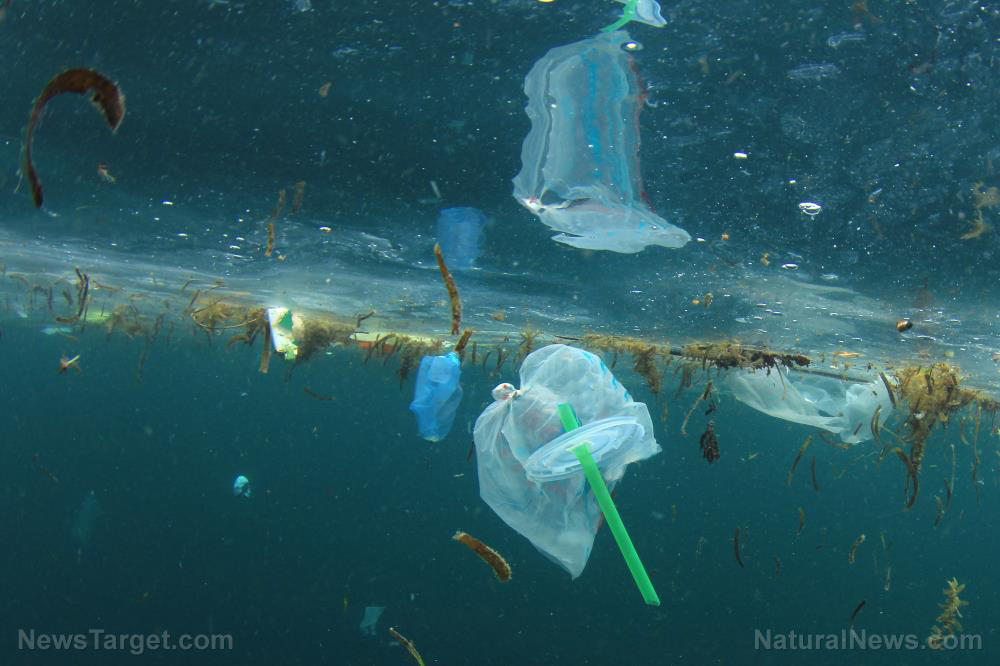
Fortunately, the study authors have also identified several ways to potentially reduce plastic waste by as much as 80 percent using readily available technologies. But the authors added that these solutions can only be applied “if key decision-makers are willing to make system-wide changes.”
Taking steps to defeat the "plastic wave"
Results of the scientific analysis conducted by The Pew Charitable Trusts and SYSTEMIQ were released in a report titled: "Breaking the Plastic Wave: A Comprehensive Assessment of Pathways Towards Stopping Ocean Plastic Pollution." The details of the study were also published in the journal Science.
The researchers explained that if nothing is done to stop the projected growth in plastic production and consumption, plastic waste polluting the ocean annually could skyrocket from 11 million metric tons to a shocking 29 million metric tons within the next two decades. This is equal to at least 50 kg (110 lbs) of plastic on each meter of coastline around the globe.
COVID-19 and increased single-use plastic consumption
Plastic waste remains in the ocean for hundreds of years and it can never be 100 percent biodegradable. By 2040, the total amount of plastic in the ocean could reach 600 million tons, which weighs as much as three million blue whales.
To add to the ongoing problems with plastic pollution, countries throughout the globe continue to struggle in the fight against the Wuhan coronavirus (COVID-19). The International Solid Waste Association reports that single-use plastic consumption has increased during the pandemic.
When 2020 began, America started various movements to reduce plastic waste. Consumers switched to reusable straws, water bottles, coffee mugs and tumblers.
Meanwhile, legislators proposed various laws to ban single-use plastics. Companies such as Coke and Pepsi also started considering measures to reduce plastic waste.
But when the coronavirus pandemic swept across the country, single-use plastic consumption increased again due to fears about the virus spreading on various surfaces. Some states temporarily banned reusable grocery bags.
Major legislation targeting the reduction of plastic packaging stalled since lawmaker priorities changed drastically. Consumers purchased more disposable masks and gloves during the pandemic. There was also an influx of plastic take-out food containers and waste from online purchases.
Not one to let opportunities go to waste, the plastics industry lobbied harder to encourage federal agencies. After all, wasn't it more sanitary to use disposable plastics? Wasn't it irresponsible to ban plastic bags when it could benefit public health?
California has made significant progress in the war against plastic waste, starting by banning single-use bags in 2014. However, when the pandemic hit the state, California was forced to suspend the law.
Many California county health departments eventually banned customers from bringing their own reusable bags into stores, contributing to an increase in plastic waste.
The global plastic challenge
Pew and SYSTEMIQ collaborated with an international team of researchers and experts for the report.
Using a unique economic model, the research team quantified the flow and amount of plastic in the global system. The model also helped them compare the quantity of ocean plastic pollution between 2016 and 2040 in five scenarios:
- No change from the projected rising flow of plastic into the ocean or "business-as-usual."
- Plastic collection and disposal
- Plastic recycling
- Plastic reduction and substitution
- A total overhaul or the "system change scenario" of the world's plastics system.
The model also analyzed the associated cost, climate and employment implications of the scenarios.
The researchers acknowledged the progress made to resolve global plastic problems. However, based on current commitments by government and industry, measures currently in place can only reduce the amount of plastic flowing into the ocean by seven percent by 2040.
If the plastic problem is left unchecked, at least four billion people around the globe won't have access to organized waste collection services by 2040. This can then increase the projected amount of ocean plastic pollution.
Addressing this predicted this gap would require the employment of more than 500,000 people to collect plastic waste daily until 2040. (Related: “Plasticrust” is a new form of pollution that’s taking over shorelines.)
Measures to address plastic waste
The "Breaking the Plastic Wave" analysis found eight measures that can help reduce 80 percent of the plastic pollution that flows into the ocean each year by 2040. These measures use technology and solutions available today.
The eight measures identified by the researchers include:
- Decreasing plastic waste in the system.
- Substituting plastics with eco-friendly alternatives (e.g. compostable materials and paper) and delivery systems.
- Improving designs and packaging for recycling.
- Expanding waste collection rates in middle- and low-income countries.
- Reducing plastic waste exports.
- Scaling-up sorting and mechanical recycling capacity.
- Scaling-up chemical conversion capacity.
- Reducing post-collection environmental leakage.
These eight measures won't just improve ocean health. The researchers suggest that implementing the changes discussed in the report could generate savings of $70 billion for governments by 2040, relative to the business-as-usual scenario.
Additionally, these measures can help create 700,000 jobs and minimize projected annual plastic-related greenhouse gas emissions by 25 percent.
The research team advised that the system change scenario can minimize annual ocean plastic pollution rates by more than 80 percent, but this requires cooperation from those in power. Even then, the world will still have to figure out an effective way to deal with over five million metric tons of plastic waste polluting the ocean each year in 2040.
To completely halt the flow of ocean plastic pollution, the scientists called for more innovation and investment, along with significant technological advances, updated business models and a focus on research and development.
Tom Dillon, Pew's vice president for environment, said that while there's no silver bullet for ocean plastic pollution, taking immediate action can help effectively can “break the plastic wave.” With the help of this report, leaders can help shape a future with less plastic waste, improved health outcomes, greater job creation and “a cleaner and more resilient environment” for the public and the environment.
Martin Stuchtey, SYSTEMIQ's founder and managing partner, echoed Dillon's sentiments. As the report findings showed, the plastic crisis is solvable.
And while one generation contributed to this problem, the next generation can step up and solve it. The study has found eight potential solutions to plastic waste and all of them are possible using modern technology.
Stuchtey noted that all that is left is for the industry and government leaders to cooperate and stop plastic flows by over 80 percent.
Plastic pollution is a unique challenge for producers and users of virgin, or new, plastics despite regulatory changes, like the bans on single-use plastic items and prevalent consumer concern about plastic waste's impact on the environment.
Instead of shirking from this challenge, providers of new and existing materials and industries should take this opportunity to develop new circular business models and reuse and refill systems to ensure that keep products and materials remain in use for a long time.
Sources include:
Please contact us for more information.























